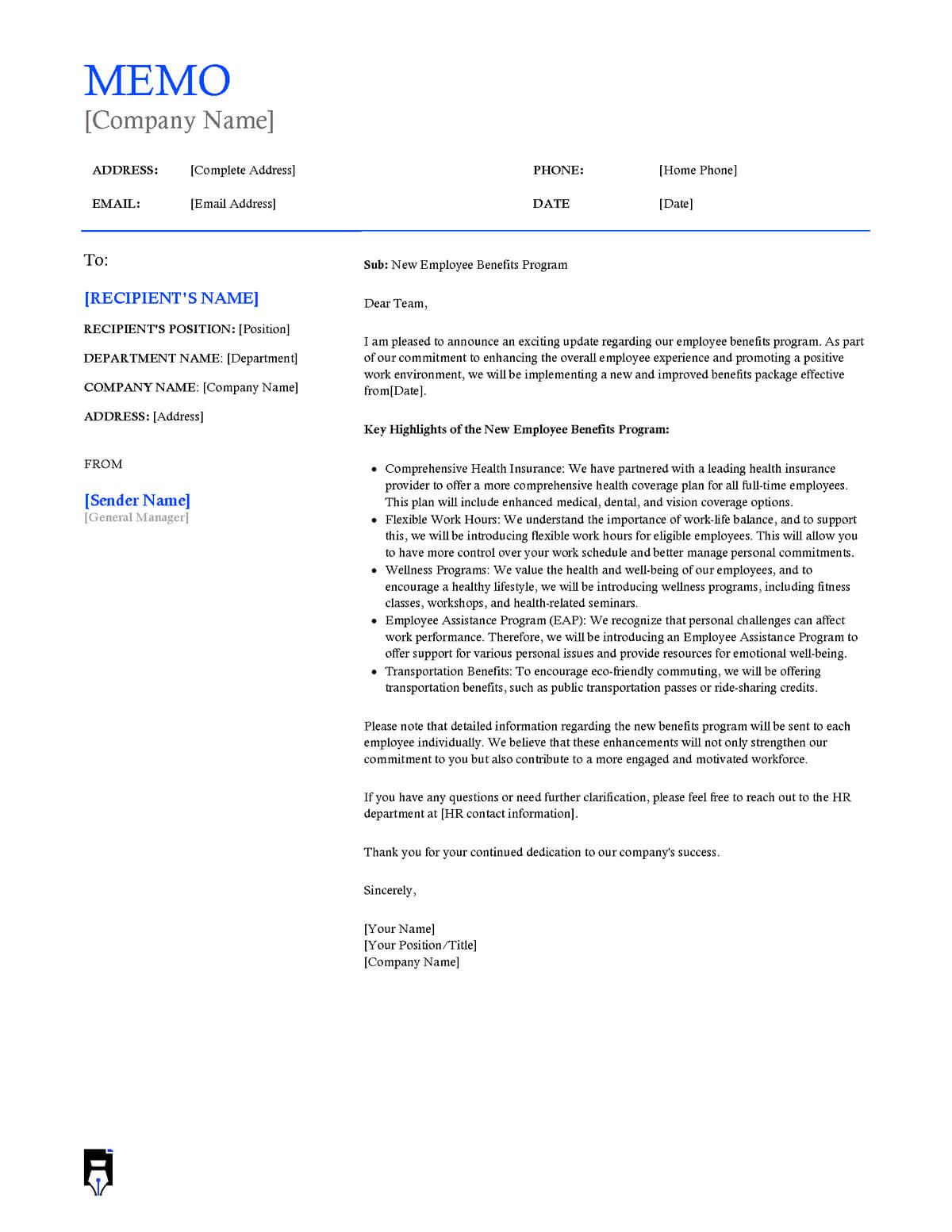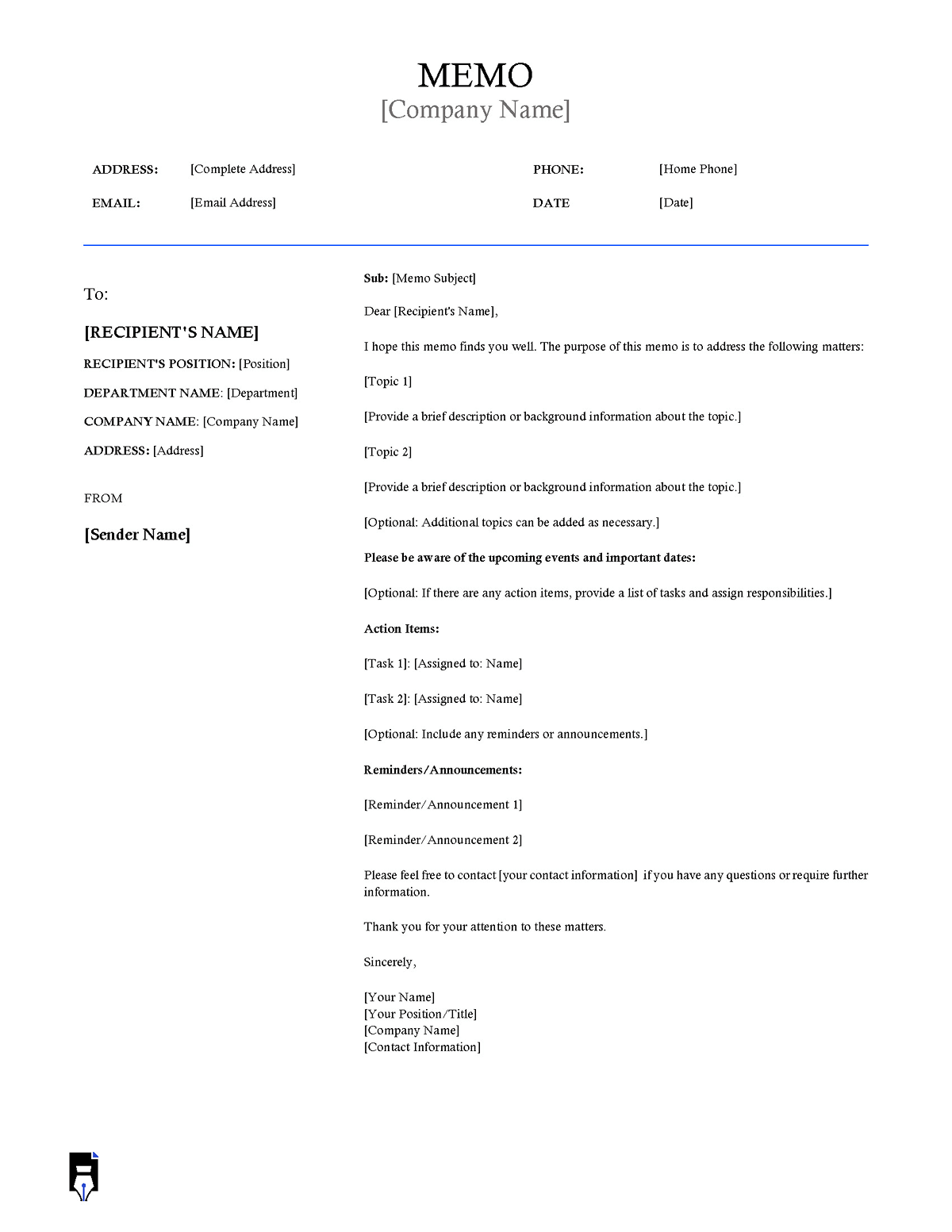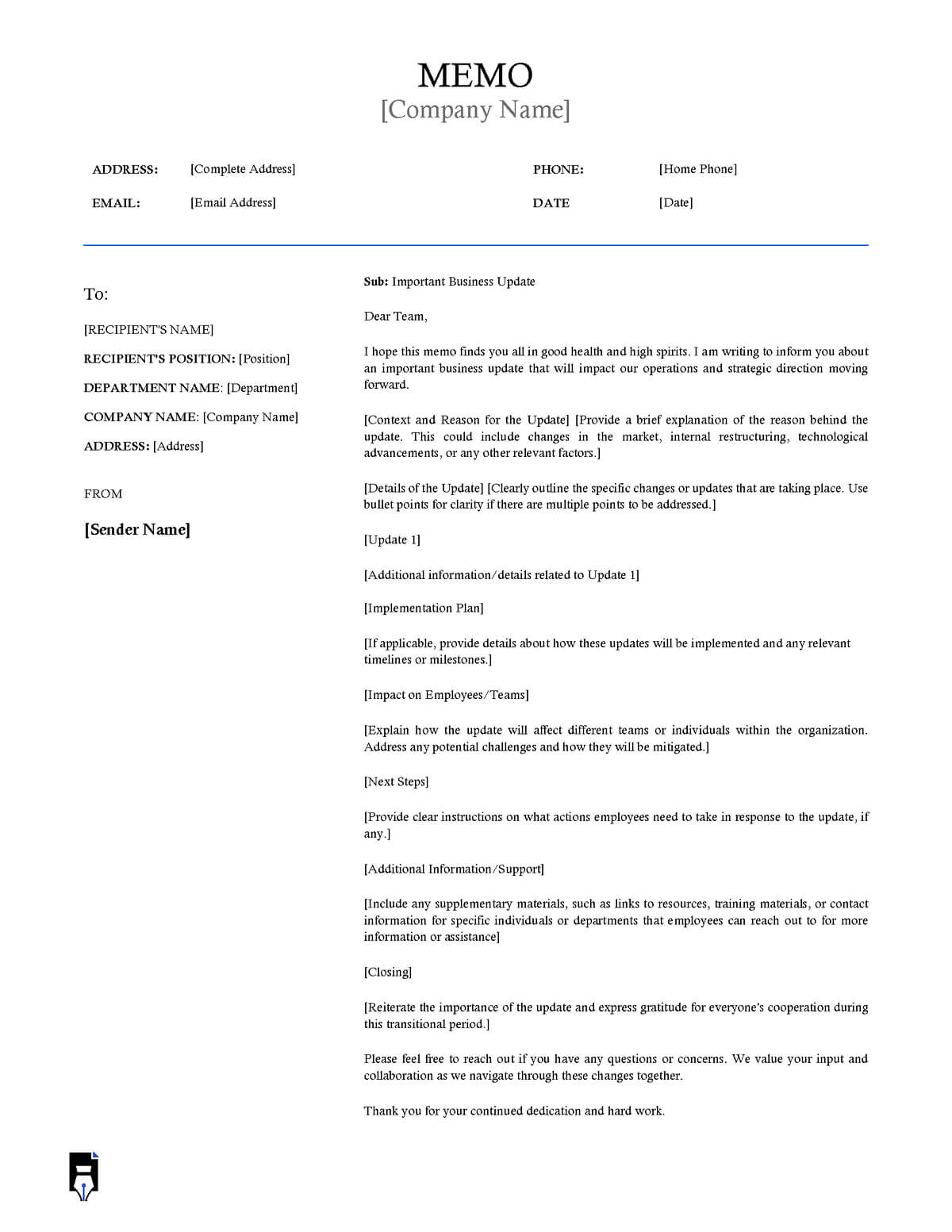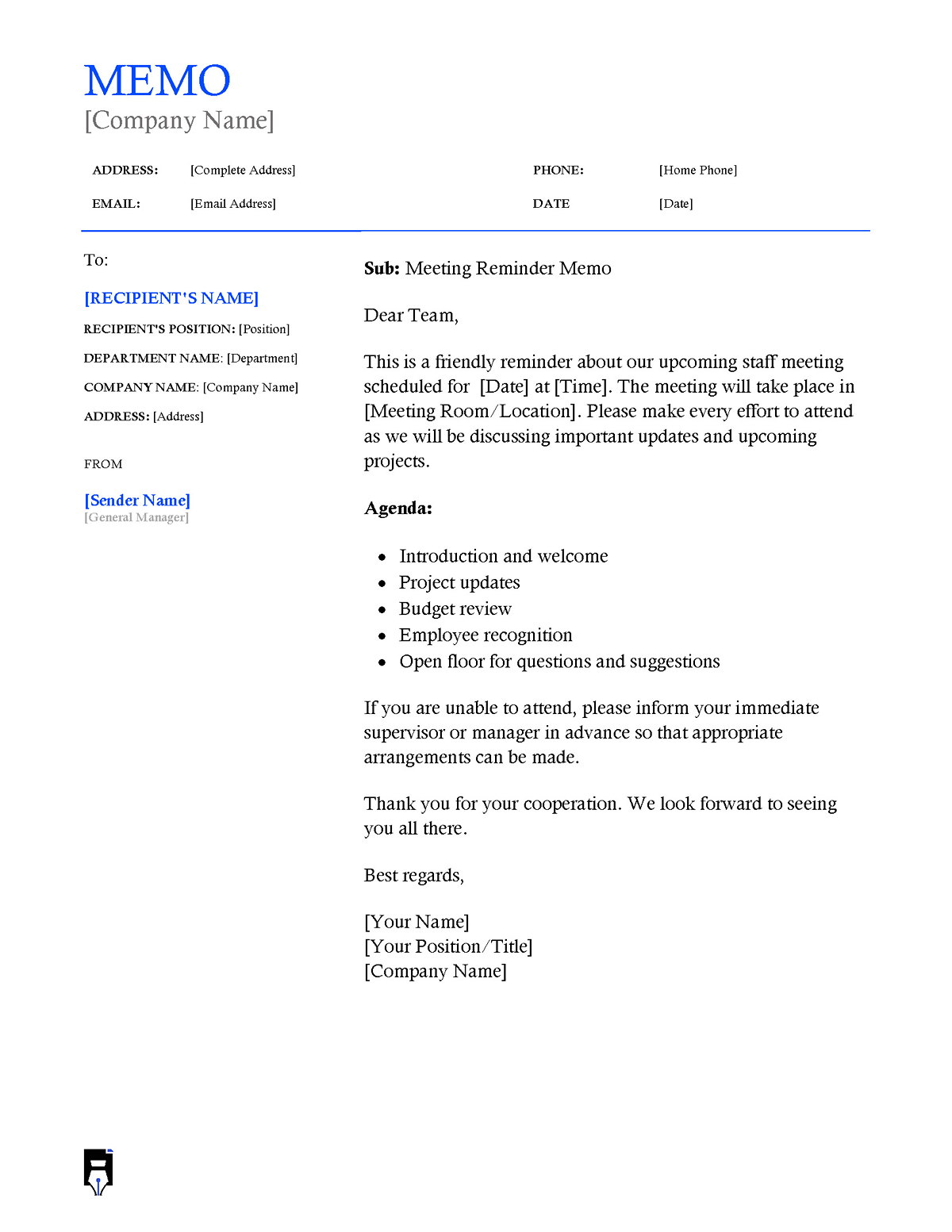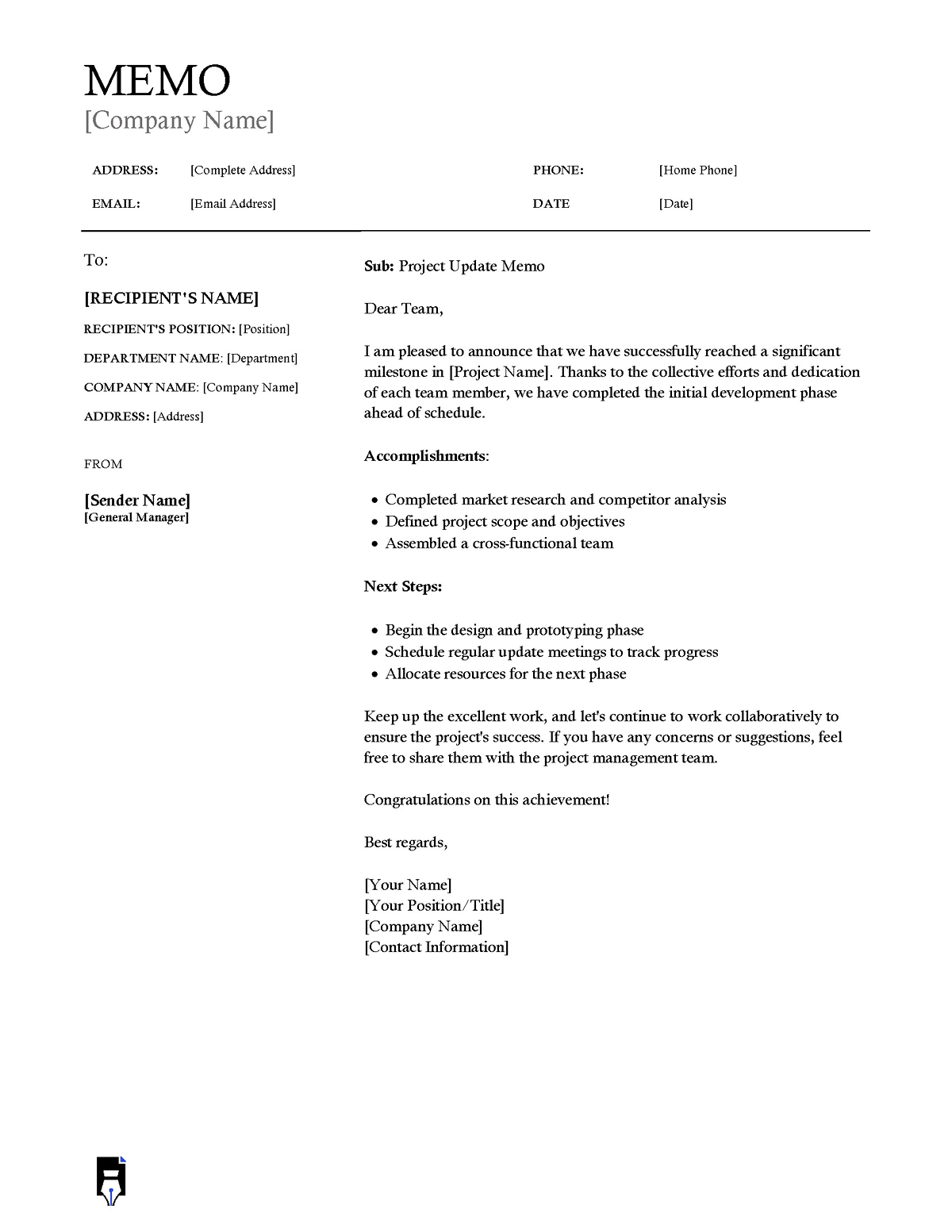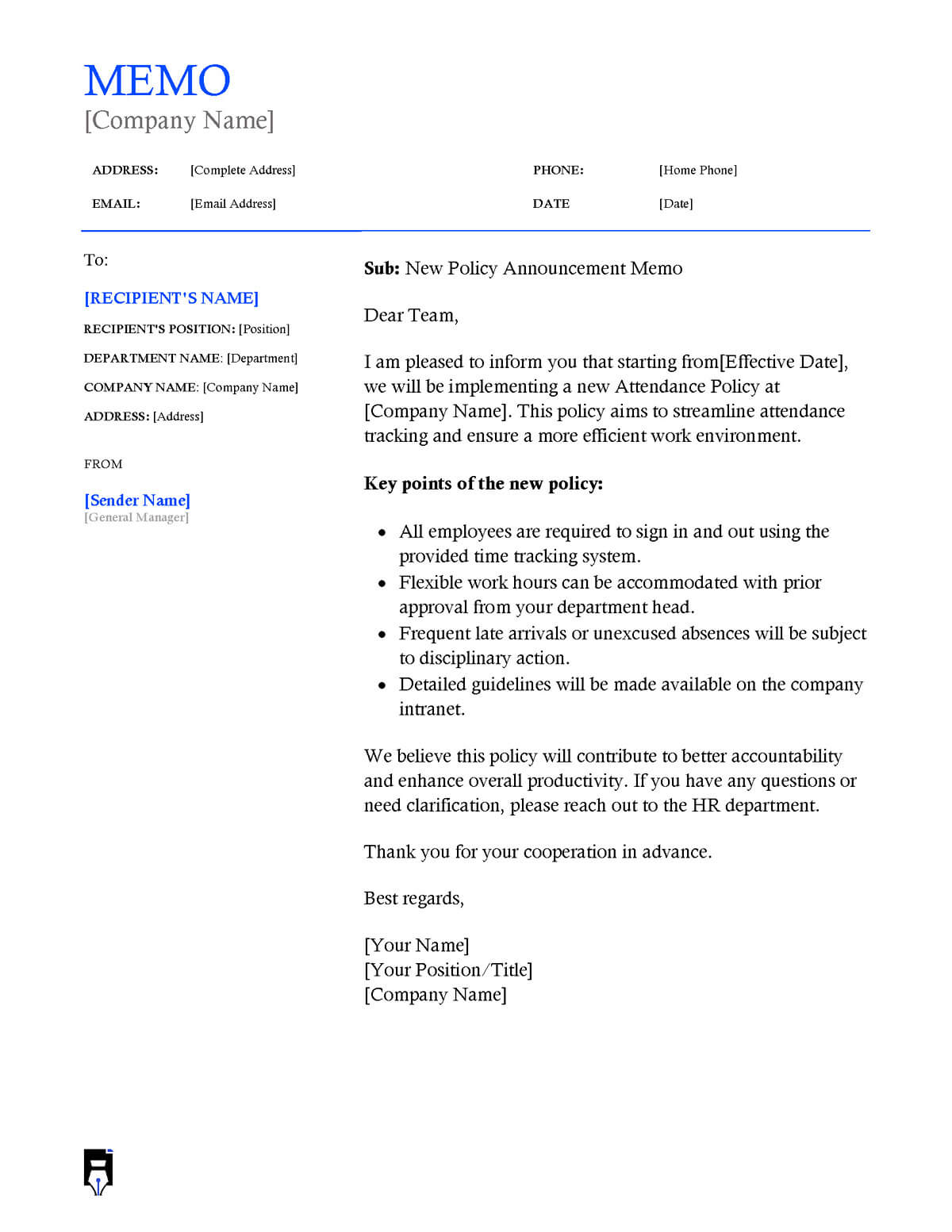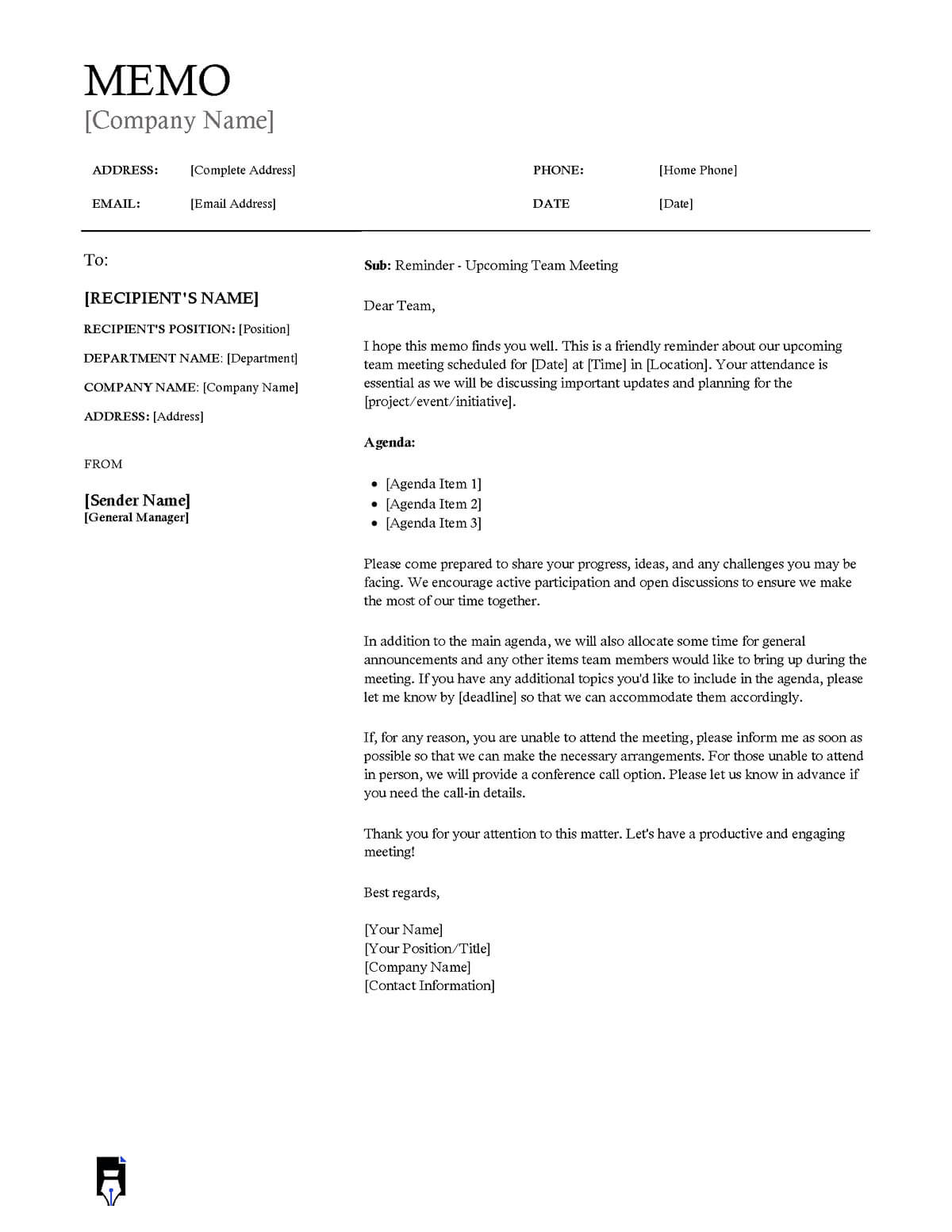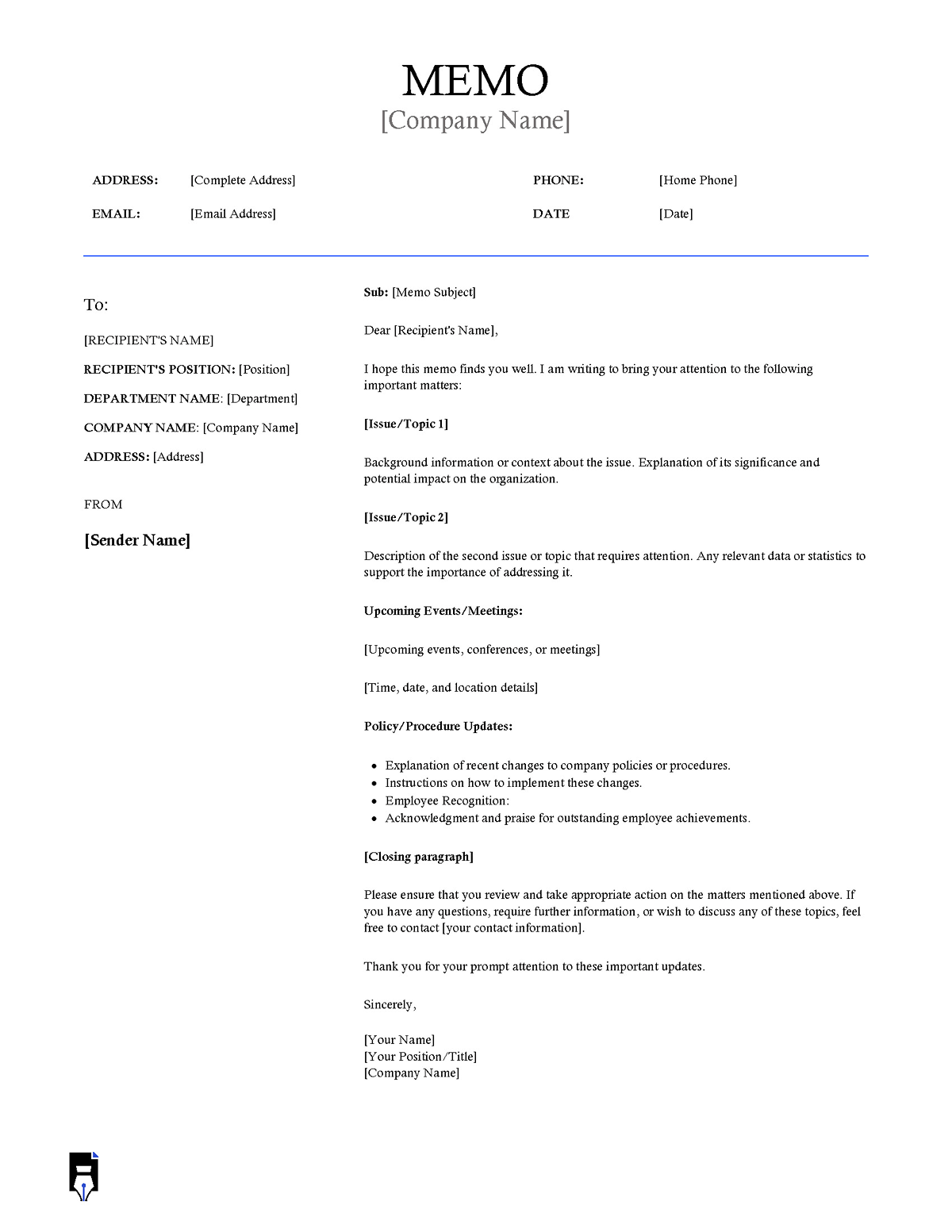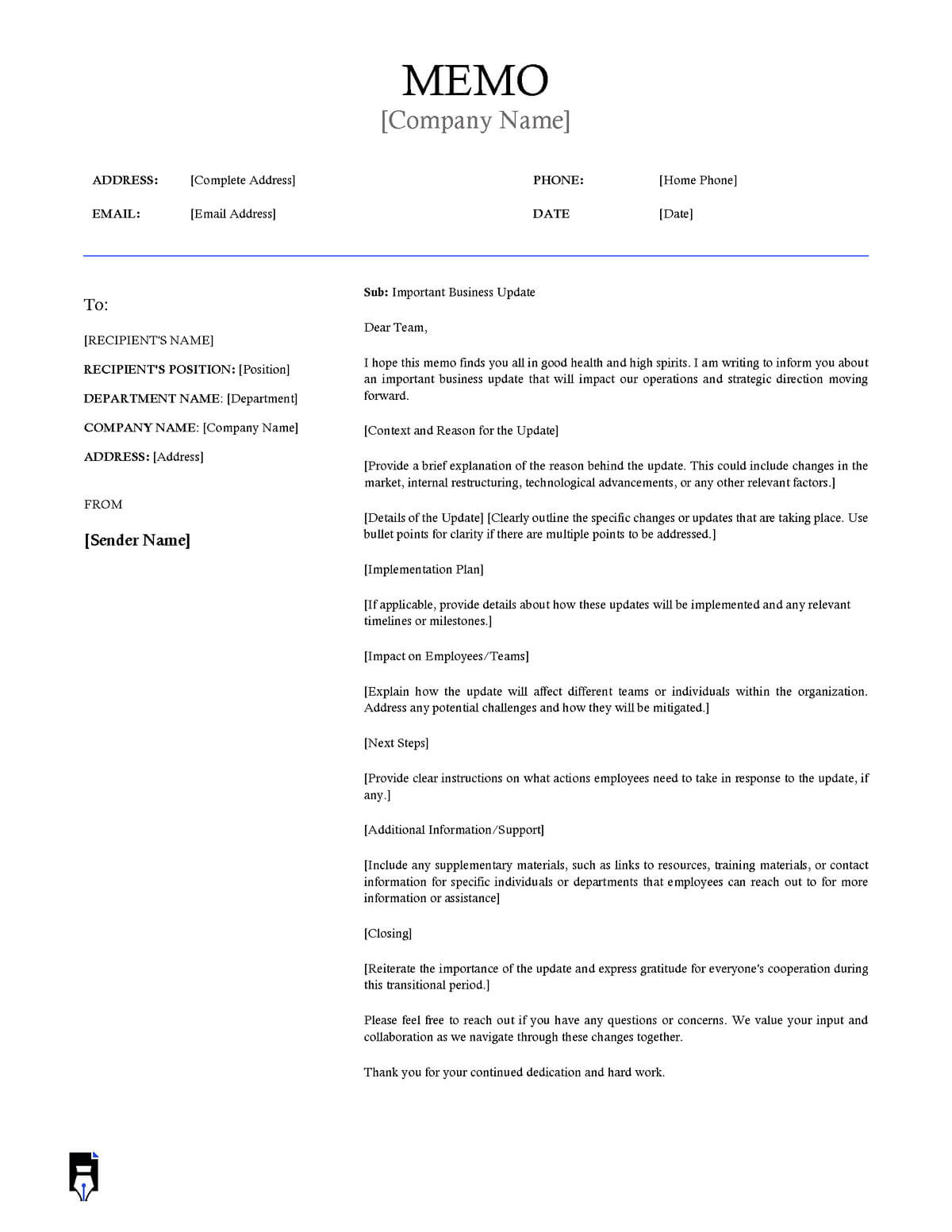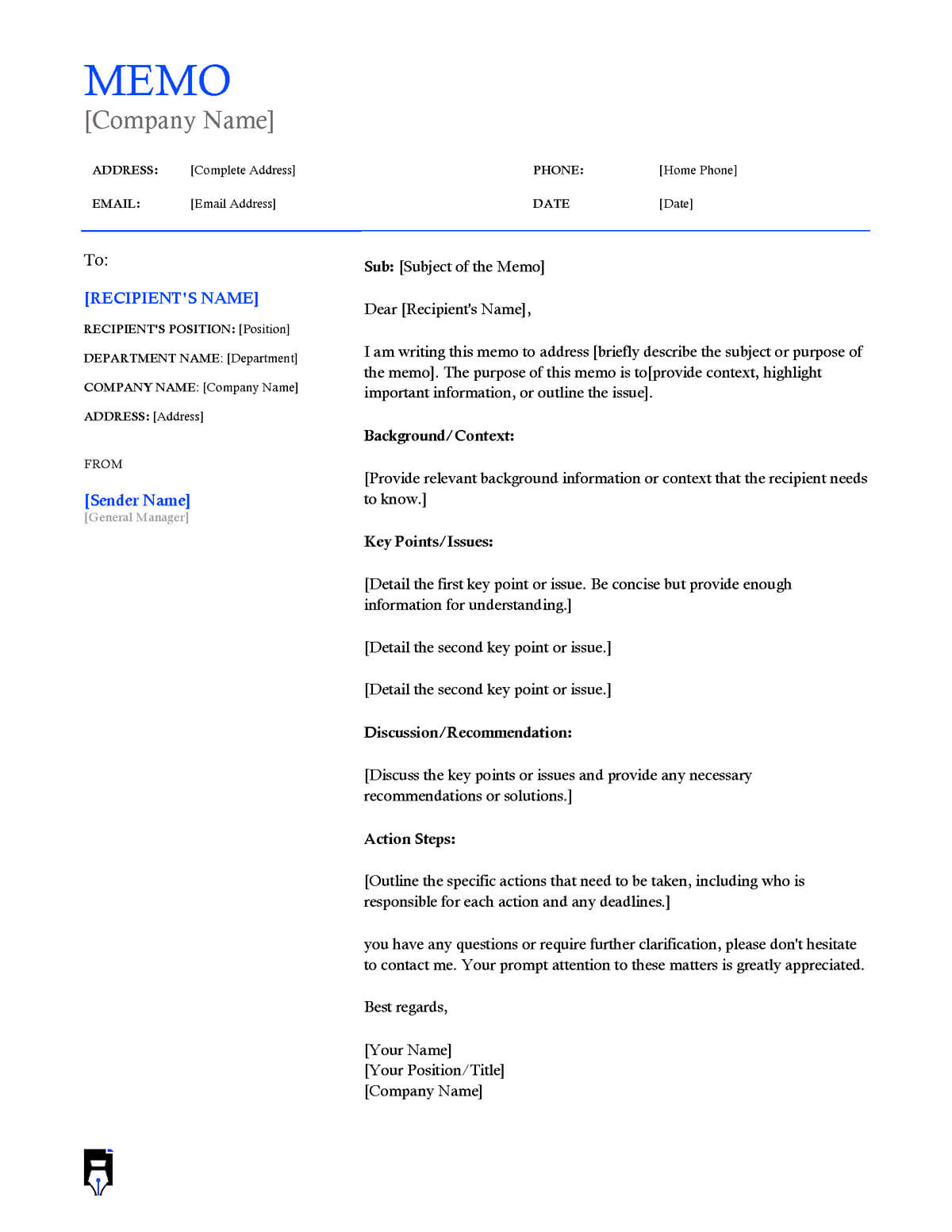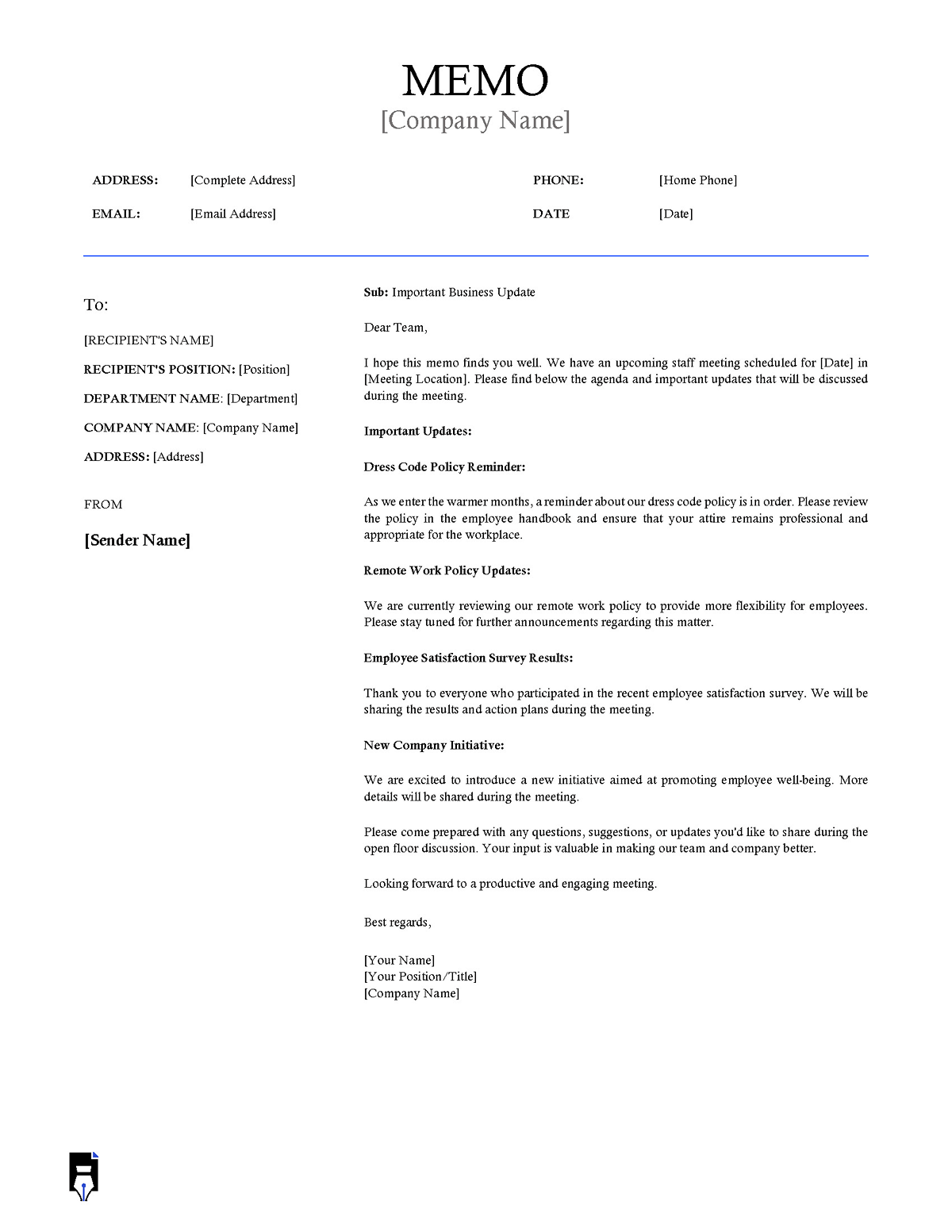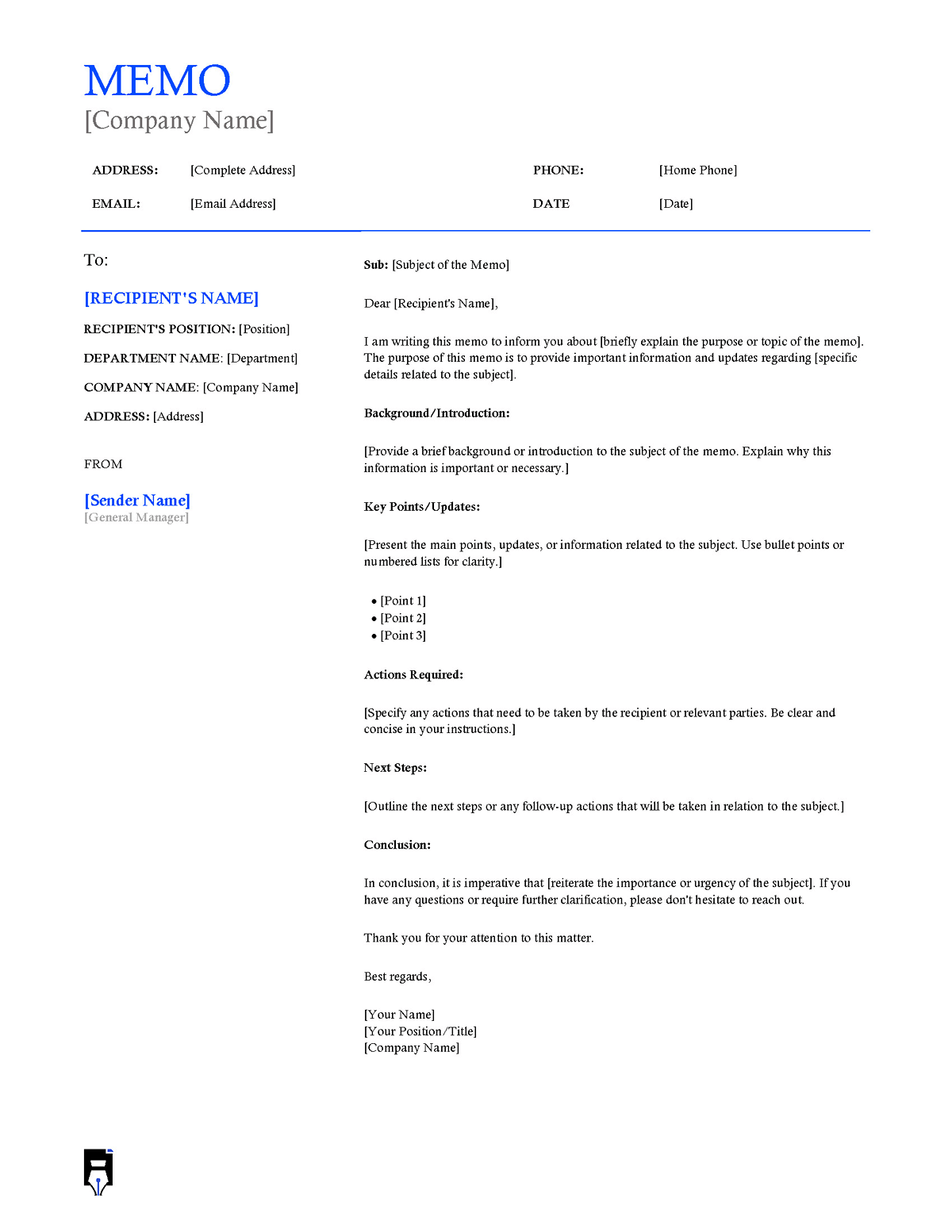In an organization, effective and efficient communication is crucial to the company’s success. With proper communication channels, there will be a flow of relevant information from the executives to the subordinates. One of the most effective ways of communicating in an organization is through a memo as it enables mass communication.
In most cases, a memo is used for internal communication concerning a change in procedures, upcoming events, or formal business within the company. A memorandum is also used to pass a message to a large group of employees like a department. The purpose of a memo is to bring attention to an event, task, project, or problem that might affect the overall functionality and operations of the company.
A memo can also be used to pass information to the general public. A memorandum can be used to raise public awareness regarding health, safety, and public events.
In this article, you will learn more about a memo, its format, what to include when creating a memo, its importance, and how to write an appealing memo.
Memo Templates
A memo template is a document that contains an outline you can use to effectively write an internal message for the intended recipients in an organization. The template layout will provide a guide on how to include the information clearly and with purpose. A memo template is detailed as it reminds you to include the recipients, the subject line, and the message before sending it.
A template will make your work easier and faster to prepare a memo. You can access detailed memo templates on our website today. They are free to download, easy to use, and can be customized to fit your organization’s needs. Also, with our memo templates, you do not have to start from scratch whenever you want to prepare a message.
What is a Memo?
A memo is a message sent to a team, department, or entire organization.
Memos are used to inform employees about what is happening in the company. For example, a memo can communicate essential company policies and best practices, request feedback, and discuss other relevant topics that directly affect the company’s operations. Memos can also be sent to clients to pass on important information.
A memorandum can be sent electronically or physically in a printed format. Remember that memos are regarded as professional documents. Therefore, the message contained in the memo needs to be short, precise, and formal because it will be filed as a company record.
Purpose
Memos are used by a business to shift the attention of the executives and employees toward a specific issue, task, project, or event. For example, a memo informs the readers about price increases and policy changes.
Besides bringing attention to a problem, it helps provide solutions to the highlighted issues. The memorandum provides the readers with relevant information and persuades them to take action, such as changing a procedure or attending a meeting.
Fact check: There is a difference between a letter and a memo. A letter is usually formal and can either be short or long, depending on the message. On the other hand, a memo is a concise message written in an informal tone. Both memos and letters are sent from one person to another.
When, Why, and Who Needs a Memo?
A memorandum is used to share a message from one person or department to another within a business. Below explains when, why, and who should use a memorandum:
When
A memo is a form of communication that provides information to your employees or executives when you want to command and direct how certain operations should be conducted. Moreover, a memo can be used to communicate semi-formal information. It can also be used when you want to encourage and urge employees to attain specific organizational objectives.
Why
Memos are deemed to be more effective and informative compared to emails and letters. For example, you can use a memo to announce a budget cut and inform employees about an existing business issue or solution. Moreover, it can be used to announce forthcoming meetings and events.
Furthermore, a memo can provide details of meeting minutes, review and recap action plans, introduce the new clients and investors, and request feedback and recommendations from employees and customers.
Who
Memorandums are created to share important information within an organization or the community.
Communities
The community can use memos to create awareness on important topics such as health issues, security, and public safety parameters, promote events, and other issues that may directly impact the livelihood of the entire community.
Businesses
Memorandums are essential to a business because they inform executives, employees, and clients of organizational changes. In addition, businesses use memos to inform employees of any procedural changes and motivate them to take action toward the highlighted issue. The actions to be taken may include attending business meetings, creating new products or services, and celebrating organizational achievement.
Types
Remember that the general format of each memo is similar but varies depending on the target audience, the tone, and the subject of the memo.
Below are different types of memos that you can use in your organization:
Suggestive memo
A suggestive memo is usually sent to encourage and motivate the employees to develop and find practical solutions to existing company problems. Therefore, with a suggestive memo, the target audience is urged and persuaded to brainstorm, carry out discussions, and develop creative thinking.
Hence the use of encouraging and motivating language is essential. This is an effective way of looking for new ideas, products, or suitable solutions to existing problems.
Confirmation memo
A confirmation memo is a document that shows and confirms verbal contracts and agreements between two parties. In addition, the memorandum outlines different aspects of the agreement; this allows the involved parties to understand the agreement’s objectives.
Additionally, the memo allows each party to clarify the terms of the contract or adjust the agreement if needed. This helps reduce unnecessary confusion and conflicts regarding the contract.
Request memo
A request memo is usually used when you send a request to your company or another individual within the organization. In this case, writing the memo in a professional and persuasive tone is necessary if you want your request to be completed.
Internal memo
An internal memo is used to pass information between members in a workgroup or within a single department. The memo communicates different affairs regarding the department in question.
Interoffice memo
An interoffice memo is regarded as internal communication within an organization. This memo allows different departments within the business to share information and communicate on matters regarding the functionality and operations of the company at large. Therefore, an interoffice memo is also known as an “Office Memo.”
Business memo
A business memo is an official communication channel between two parties in the same business niche. In most cases, communication happens between two or more parties within an organization.
Policy memo
A policy memo is a document to inform the employees about the changes made in the company policy. Notably, this memo is usually a directive shared or sent by the company’s management or head of the department.
Operational memo
An operational memo is used to communicate a change in operational procedure to the employees. In most cases, this memo is issued as a command that the target audience should strictly follow and adhere to.
Memorandum of agreement
A memorandum of agreement is a legal document used to describe an agreement and work relationship between two parties. This memo can also be identified as a “Memorandum of Understanding.”
Structure of a Memo
Although a memo is a formal business document, it contains a salutation or the sender’s signature. The proper format and structure of a memo are shown below:
Header
Start with the header, which should include the company’s details and the words “Memo” or “Memorandum” written below the company details:
Company information- For the company’s details; ensure that you include the name and address of the company. This information is usually written in the address section or printed as a letterhead.
Recipient’s details
The next section comprises the recipient’s information which identifies the intended recipients of the memo. Ensure that this section highlights the employees being addressed in the document.
Sender’s name and designation
The recipients need to know the individual who prepared and sent the memo. Therefore, you must include the sender’s name and designation/job title in this section. If you are the person writing the memo, you can also include the name of your department.
Date
The date when the memo was written must be included. This is for record keeping for future reference.
Subject line
At this point, you should include a subject line. Your subject line should be catchy, appealing, and very specific. It should inform the recipients of the memo’s contents before they even read the document. Also, especially for digital memos, recipients can easily find each memo you send to them since they all have unique subject lines.
Body
For the body, focus on why you are writing the memo. This section contains the main message meant for the recipients. Ensure that you have about three paragraphs for your body section. The first paragraph should briefly address what the document is all about. The focus should be on the most crucial information in the memorandum. The second paragraph is where you will provide extra details about the matter or issue you mentioned previously.
For the third and final paragraph, you should focus on making your request clear. You need to state the action(s) you want the recipients to take. If your memo does not contain information that requires you to request at the end, you can use the final paragraph to thank your colleagues or employees for their time and consideration.
Conclusion
The last part of the memo’s structure is the conclusion. Next, focus on finalizing the message you share with the document recipients.
Information to Include
For a practical memo, you should include the information shown below:
Introduction
This is the first part of the memo, which is meant to provide the readers with the context. This section focuses on the situation or why you are communicating with the recipients. Therefore, it should be brief, captivating, and straight to the point.
For example:
I am writing this memo to remind you about the company’s 20th-anniversary celebrations on Saturday, 30th of this month.
Purpose
The second section of the memorandum should highlight the purpose of the document. You should focus on the background information and the resolution, as this section is the central part of the memo. This section may include statistics and examples to enable the readers to understand how the resolutions were made.
For example:
As our company celebrates this achievement, we have decided to rebrand our company logo to accommodate this significant milestone. Meetings will be held to discuss the new feature the company should add to the business logo to celebrate this achievement. Once it has been decided, the new look will be shared across the company and to outsiders through anniversary posts on social media.
Action
The final part of this document is the conclusion or action section. This final paragraph should focus on the action(s) the readers should take. You can include a directive, call to action, or any other action in this section.
For example:
Regarding our company’s 20th Anniversary, you are all expected to attend the celebration event. In addition, every company member must be present at the event as there will be a company photo shoot. In case of any questions or requests, don’t hesitate to contact me at email [email protected].
Important: Remember that memos are meant for internal purposes only. If your company wishes to reach out to outsiders, it is best to use a business letter. Unlike a memo, a business letter is more formal, professional, powerful, and outstanding.
Remember that it is beneficial to use a template when creating a memo. This is because a template will ensure that you prepare your message in a neat way for an easier understanding of the message.
Another benefit of using a template is that it guarantees the following:
Keeps you connected
A template helps your organization stay connected as a company-based message can easily be prepared and sent to all the intended recipients. This means everyone will know what is happening in the company, know when to attend a meeting, or even learn about the changes to be implemented. That means there is adequate and proper communication.
Avoids misunderstandings
A template will also help you structure and break down information, which helps you pass your message to your intended reader. With a well-structured message, the recipients will respond quickly and correctly. In addition, a quick update from each company member will make the professional environment more efficient.
Tips for You
With a memorandum, you can quickly and easily reach out to every intended member of the company. However, there are some tips that you should consider when writing the memo to ensure that it serves its purpose, as discussed below.
Below are some tips you should use when writing your memorandum to make it effective:
Write to the point
Ensure that your memorandum is to the point; no matter the format you use. Whether it is simple or complicated, the main focus should be that it communicates the intended message effectively. Also, the message you include in your memo should always be well-defined and concise.
Tailor memo’s content to the audience
It is crucial to tailor your memorandum’s content to suit the targeted audience. Unlike an email, a memo’s content must consider the intended recipients to ensure that the message is relevant, the language used is professional or relatively formal, the appropriate tone, and the wording is structured correctly.
Make it personal
You need to make your memorandum more personal and less robotic by adding a personal touch to make the message more appealing to the employees. Remember that your recipients are human beings who will be more responsive to a memo that engages them. It is about “adding your voice” to the structure of the memo.
Include further resources
Apart from the message itself, ensure that you include further resources such as your contact information. This way, employees can easily communicate with you if they have questions. In addition, with these extra resources, you will be guaranteed that your employees will reach out to you. This is in case they are confused about the actions to take or concerned with the message in the memo.
Keep a professional tone
Even if you know everyone in the company and have interacted with them, ensure that you maintain a professional tone when writing your memo. Since a memo deals with internal communication, you can make your tone friendly but still maintain professionalism. Also, ensure that your message has legal standing, especially about company policies and procedures.
Avoid acronyms and abbreviations
It is better to write these acronyms and abbreviations in full by spelling them out instead of using their short forms. This way, your message will be understandable to everyone.
Remain objective
When writing your message, ensure that you remain objective and free from personal bias. You can achieve this by including facts in your memo.
Stay clear and concise
A memo should be a brief message that makes a request or an announcement. That means the memo’s content should be clear and concise for the reader’s benefit.
Keep the memo to one page
Your memorandum should be one to two short paragraphs in length. However, if your message is meant to be long, ensure that you maintain the length of your memo to one page long.
Use attachments
If necessary, you can use attachments or flyers to provide better context to your memorandum. Ensure that these attachments have a clear message that is relevant to what you mentioned in the memo.
Check your terminology
Ensure you check the terminology used in your memo before sending it to the intended recipients. This includes words, abbreviations, phrases, references, and acronyms. The idea is to make the message easy to understand; hence, the terminology should be basic and straightforward.
Use white space
Utilize the white space to break those long paragraphs in your document. That way, the memo will be more appealing and will not become monotonous. Also, it is advisable to avoid paragraphs in some cases and use bullet points or sub-headings to capture and maintain the reader’s attention.
Get rid of emotions
Another vital tip you should observe when writing your memorandum is getting rid of all emotions. Use impartial words instead of subjective ones that might represent emotions. Again, the idea is to maintain a professional look.
Keep it logical
It is also essential to keep it logical when writing your memorandum. Therefore, your content should be written systematically and meticulously while avoiding assumptions regarding the background information.
Proofread your document
Ensure that you take your time to proofread and edit your memo before sending it. This professional document should not contain grammar, spelling, or punctuation mistakes.
Do you know? Most offices still use memos. This is because memos easily get attention, are a professional way of internal communication, and accommodate different formatting styles. However, most of these offices no longer use printed memos; instead, they use digital or electronic formats.
Bottom Line
A memo is more effective than a letter or an email when passing information to a large audience. Memos allow you to easily communicate relevant and important messages to your employees and the entire company. Moreover, in most businesses, memos are regarded as official documents with information that can be used for future reference.
When writing your memorandum, remember that it should be short, precise, and straight to the point. Additionally, it is vital to use a format that best suits your target audience and the message you are trying to communicate. Finally, note that the message conveyed in the memo should be clear and concise regardless of the format used. A memorandum is essential to a business that wants a free flow of accurate information at all its hierarchy levels.
Use our memo templates to prepare a practical document for excellent internal communication at your company. Also, ensure that you observe the structure and the information you must include in preparing a proper memorandum.
